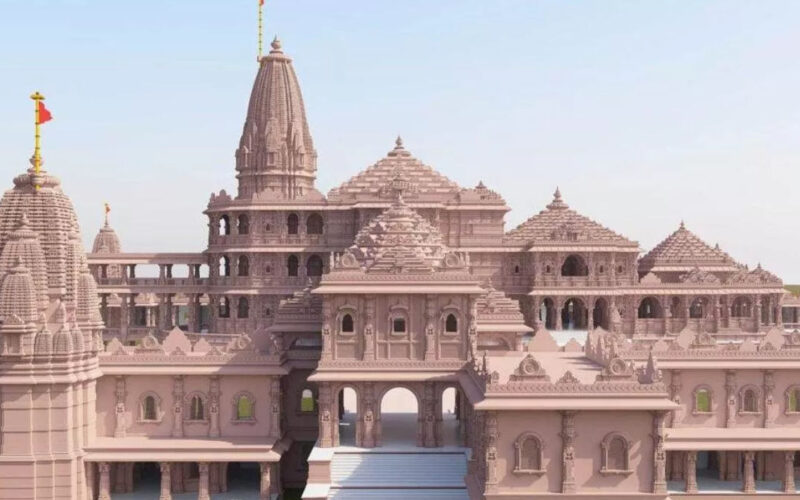January 20, 2024: As the much-anticipated inauguration of the Ram Mandir in Ayodhya approaches on January 22, we delve into essential details about this monumental structure that promises to stand as the largest temple in India.
1. Architectural Marvel by the Sompura Family: Designed by Ashish Sompura, son of the renowned Chandrakant Sompura, the Ram Mandir’s architectural plans were conceived 30 years ago. With an impressive height of 161 ft and a sprawling area of 28,000 sq ft, it is poised to become India’s largest temple.
2. Sacred Foundation with Soil from 2587 Regions: The temple’s foundation holds profound spiritual significance, incorporating sacred soil from 2587 regions, including Jhansi, Bithoori, Haldighati, Yamunotri, Chittorgarh, and the Golden Temple.
3. Illustrious Sompura Family: Hailing from the illustrious Sompura family, known for crafting over 100 temples globally, including the revered Somnath Temple, the architects behind the Ram Mandir, Chandrakant Sompura and his sons, Ashish and Nikhil, carry forward a legacy of temple architecture.
4. Steel and Iron-Free Construction: In a unique feat, the Ram Mandir is constructed entirely of stones, with no steel or iron used in its building process.
5. ‘Shri Ram’ Bricks with Sacred Inscription: The construction of the temple incorporates bricks inscribed with ‘Shri Ram,’ reminiscent of an ancient practice during the building of Ram Setu, symbolizing strength and durability.
6. International Gesture: Soil from Thailand for Consecration Ceremony: As a gesture of international spiritual camaraderie, soil from Thailand has been sent for the consecration ceremony on January 22, reinforcing Lord Ram’s legacy beyond geographical boundaries.
7. Three-Floor Marvel with Bansi Paharpur Craftsmanship: Spanning three floors across 2.7 acres, the ground floor portrays Lord Ram’s life, while the first floor showcases the grandeur of Lord Ram’s Darbaar. Crafted with Bansi Paharpur, a pink sandstone from Rajasthan’s Bharatpur, the temple stands at an impressive 360 ft in length, 235 ft in width, and 161 ft in height.
8. Consecration with Holy Water from 150 Rivers: Reports indicate that the August 5th consecration ceremony utilized holy water from 150 rivers across India.
9. Time Capsule for Posterity: A time capsule buried 2000 ft below the temple preserves the temple’s identity for future generations, containing a copper plate inscribed with relevant information about the temple, Lord Ram, and Ayodhya.
10. Nagar Style Architecture with 360 Pillars: Incorporating 360 pillars in the Nagar style, the temple showcases architectural finesse, enhancing its visual appeal and solidifying its status as a masterpiece.”
